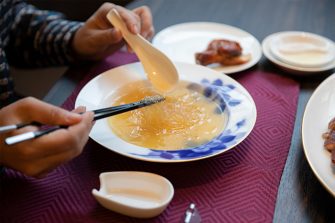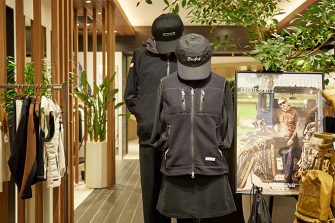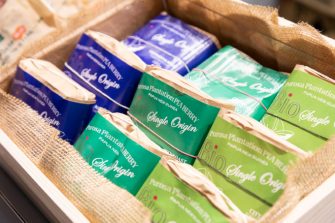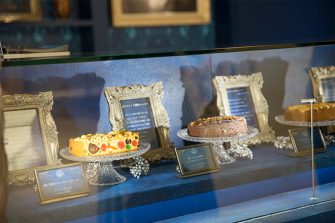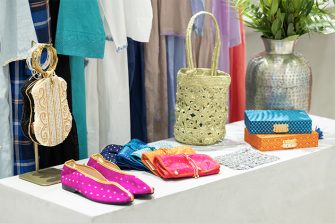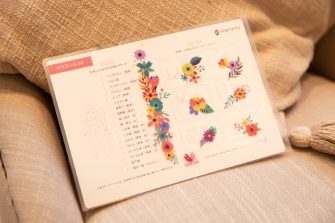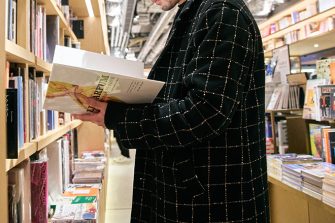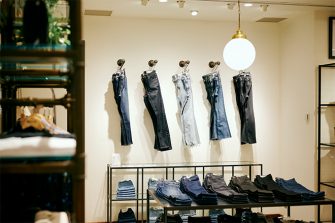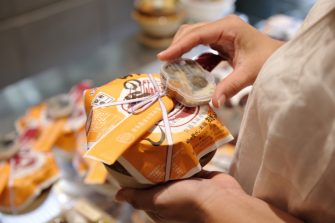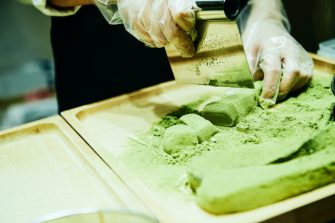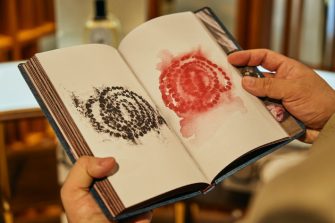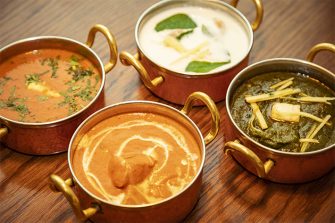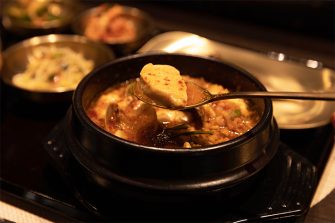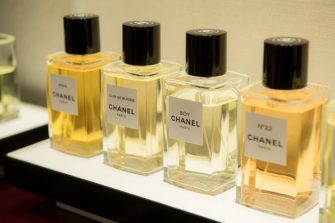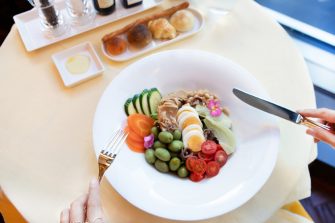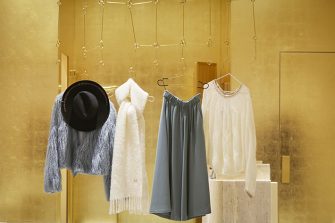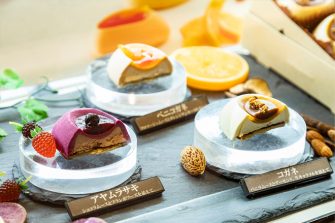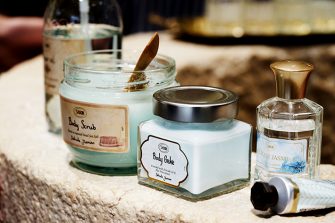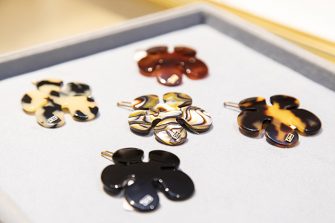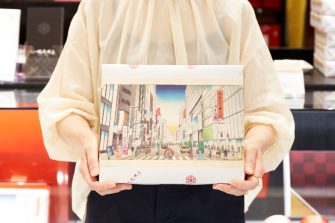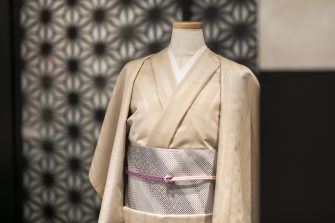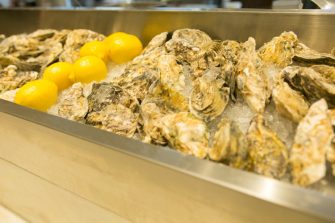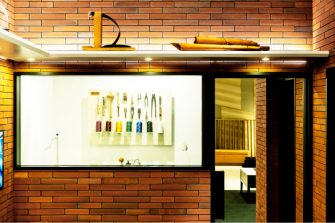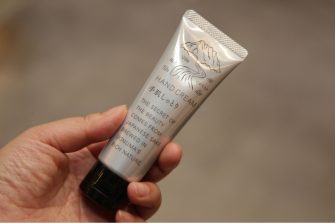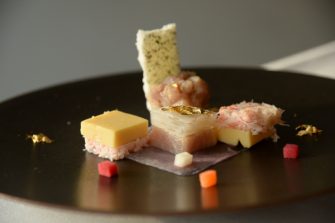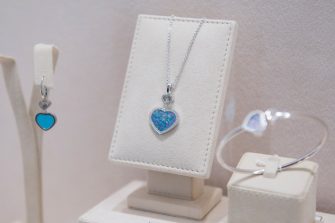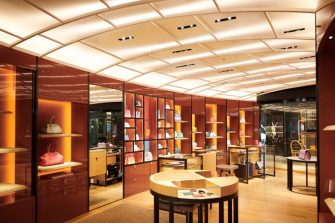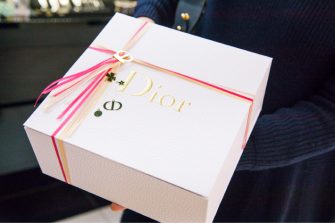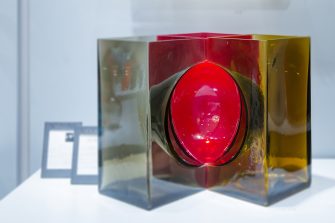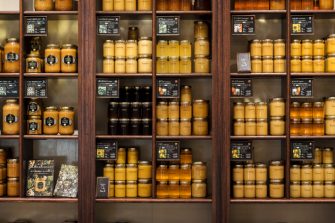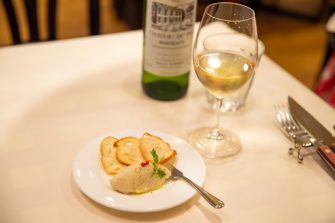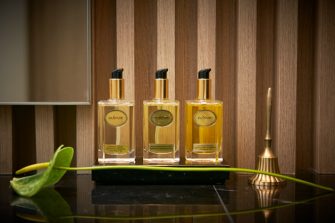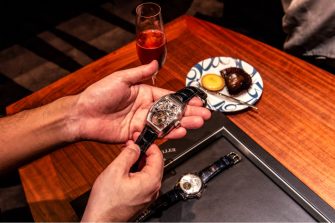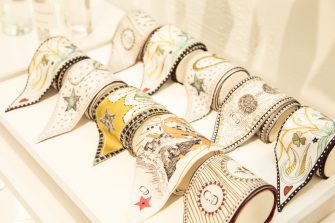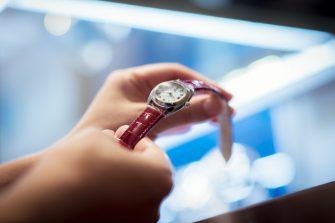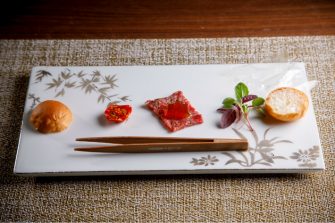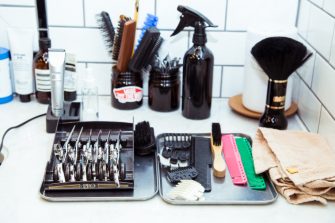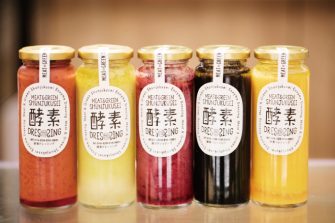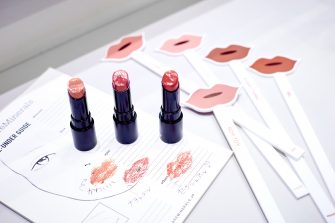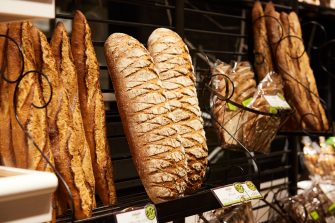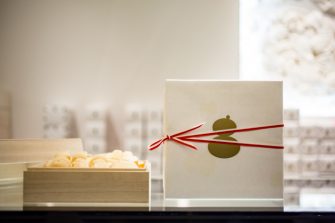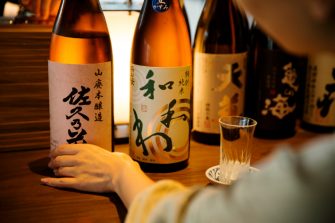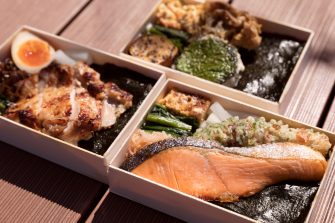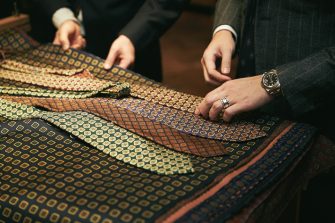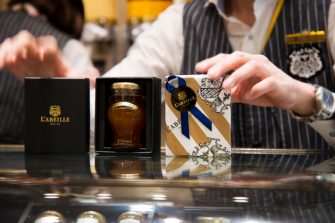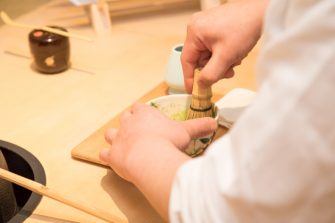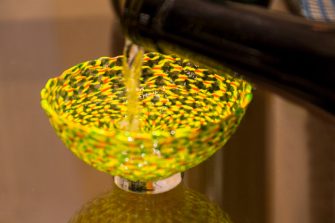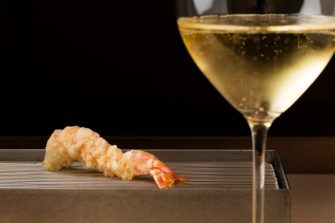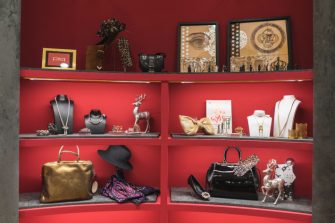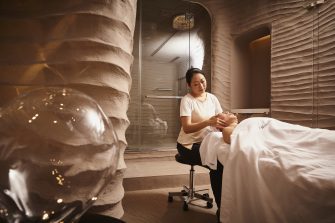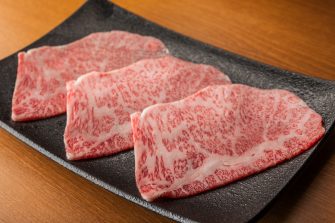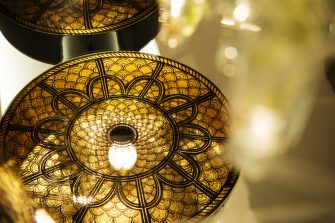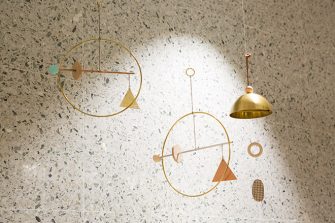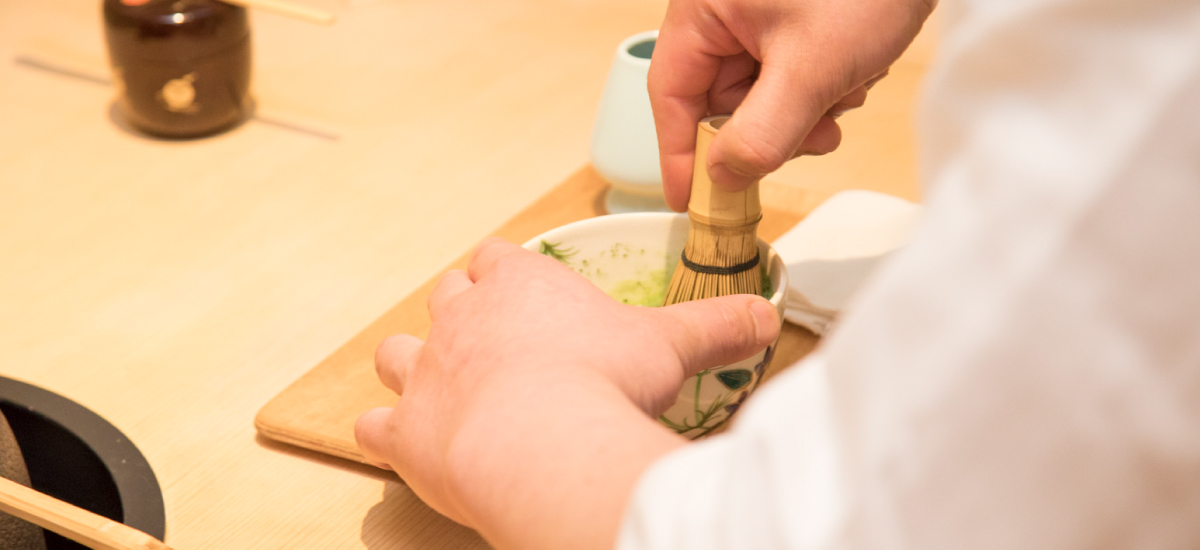

GINZA SIX EDITORS
ファッション、ジュエリー&ウォッチ、ライフスタイル、ビューティ、フード…
各ジャンルに精通する個性豊かなエディターたちが、GINZA SIXをぶらぶらと
歩いて見つけた楽しみ方を綴ります。
茶の湯のもてなしに通じる、編集力と融通無碍なもてなし力 A Curator’s Vision and Boundless Hospitality Recall the Art of Chanoyu
中村 孝則
GINZA SIX EDITORS Vol.27
今回、GINZA SIXをじっくり巡って、ここには、茶の湯の極意に通じるもてなしの原点があると感じました。いきなり茶の湯などというと、約束事が多く敷居が高く感じる人もいるかもしれませんね。確かに、茶の湯が網羅する範囲はとても幅広い。庭木の植栽から石組に至る路地の塩梅。茶室をめぐる建築に微細から、床の間のしつらえに必要な書画に茶花、炭道具から香から懐石料理に菓子、季節ごとの着物に至る、ライフスタイルの全てが含まれますから。それらの全ての微細に、アート的な感性を入れるのが茶の湯の面白いところで、千利休はその達人だったのですね。GINZA SIXも見方を変えれば、ライフスタイルの総合的な演出をしているわけで、そこに美的で編集的な仕掛けが随所に施されていることが、茶の湯的だと、私は思うのでありました。利休は、茶人でもありましたが、同時に審美眼を持ったアートディレクターであり、イベントプロデューサーでもあったわけですが、もし彼が蘇ってGINZA SIXを見たのなら、「やられた!」と随所に驚き悔しがるがるのではないか。私も茶人の端くれであるから、今回は利休さんにでもなったつもりで、茶人目線で選んだGINZA SIXを巡ってみたいと思います。

地下2階の「くろぎ茶々」の店構えは、まさに茶席の設えがそのままに。蹲を配した小さな路地を通り店内に入ると小間の茶室のような5人がけのカウンターが配され、市中の山居よろしく非日常感を演出します。
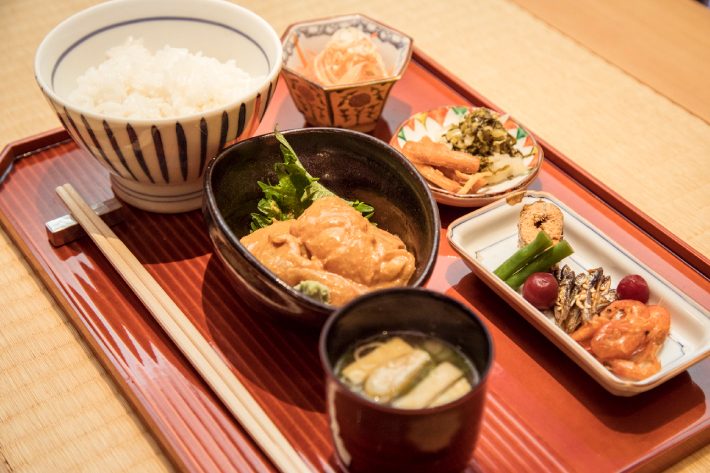
ここのメニューは、名物の「鯛茶漬」(3,000円 以下全て税抜価格)のみ。しかし、ただのお茶漬と侮るなかれ。茶事の一汁三菜ではないが、この御膳にはご飯と味噌汁の他に、特製ゴマだれに和えた新鮮な鯛の刺身、小鉢、酢の物、香の物までつくではないですか。これで十分な懐石料理になっているのです。
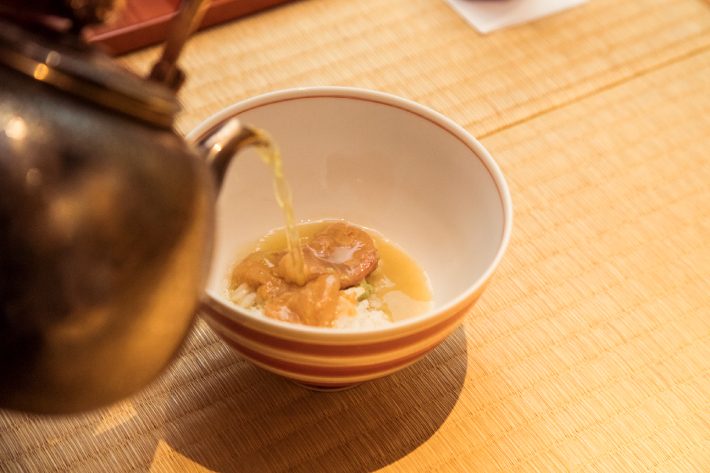
まずは、炊き上がった白いご飯だけで鯛を堪能した後に、別の丼でお茶漬として味わいます。別々の味わいが楽しめるのが味噌です。そのお茶も、煎茶や焙じ茶などから選ぶことが可能。
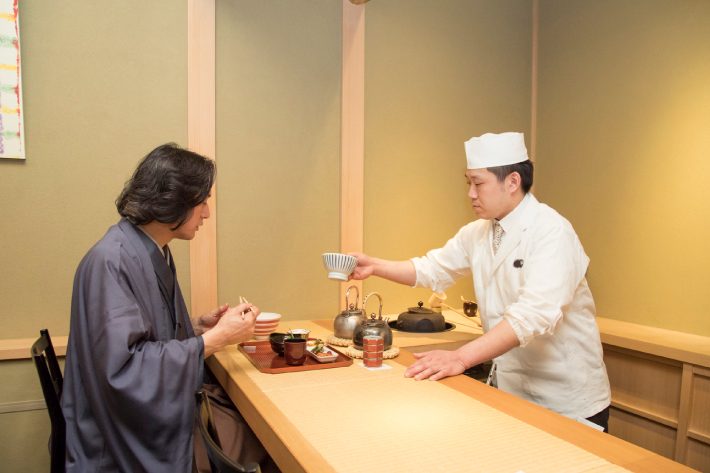
ご飯だけでなく、なんとゴマだれの鯛まで、満足いくまでお代わり自由という。ちなみに、午前10時半から開店しているので、遅めの朝食としてオススメしたいですね。東京は美味しい和食の朝食をたべられるところが少ないのです。
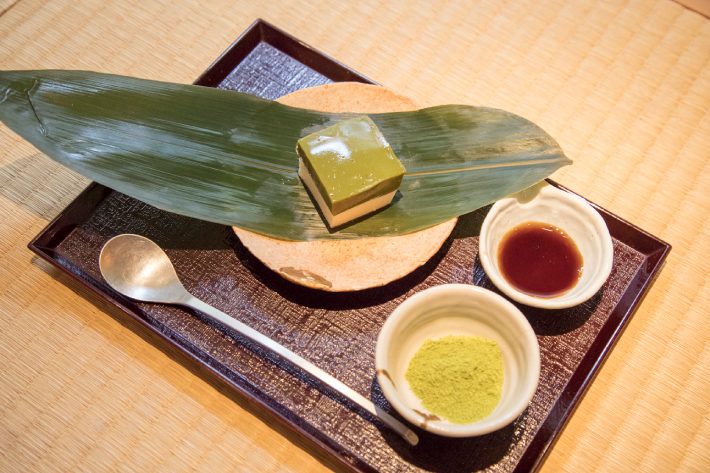
デザートのお菓子は、お土産でも買える「常葉白練」。上半分が宇治抹茶の入った葛羹で下半分は北海道産のクリームチーズで構成されています。
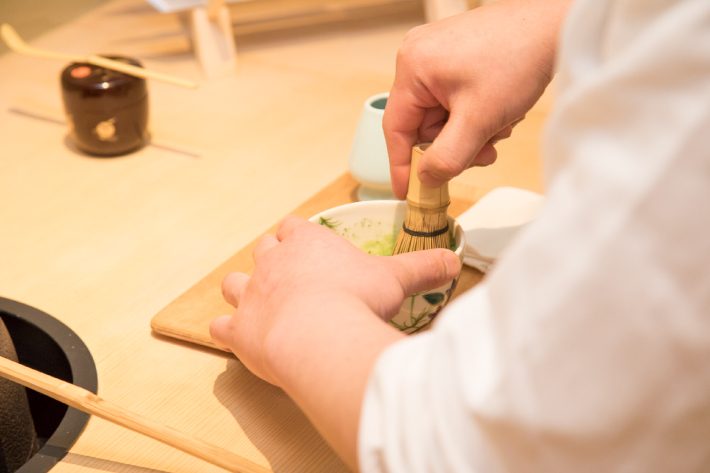
菓子と一緒に抹茶が点てられます。こちらの店は寛政2年創業、京都のお茶の老舗「福寿園」とコラボレーションしているので、本格的な抹茶が楽しめます。
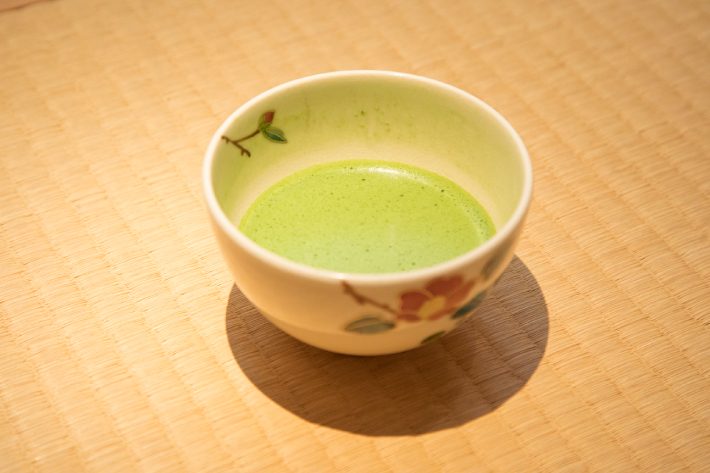
この日は、手慣れた手つきの中村大輔さんによる一服。「お服加減、まことに結構です」
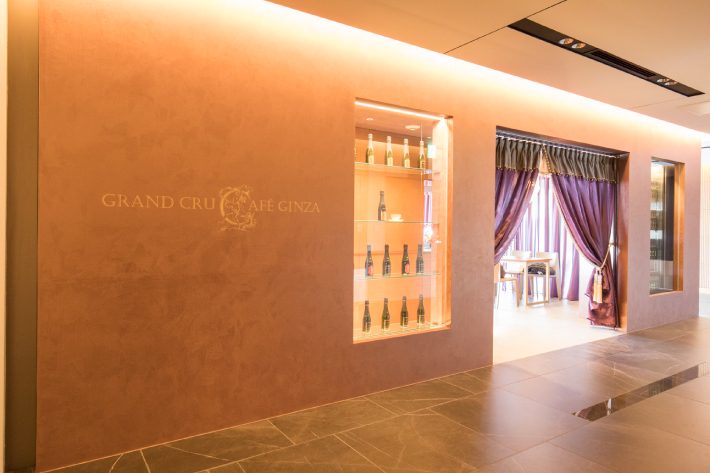
13階の「GRAND CRU CAFÉ GINZA」は、ミカフェートの創始者でコーヒーハンターでも知られる川島良彰さんプロデュースのコーヒー専門店。まるで高級フランス料理店のような店構えですが、コーヒーの究極のサロンとも言える、世界でも類を見ない演出がなされています。川島さんは、前に私がレギュラーを務めていたNHK BS1「エル・ムンド」にも出演してくださったご縁があるのですが、「コーヒーも高級ワインのような楽しみ方がある」という持論を具現化したお店になっています。
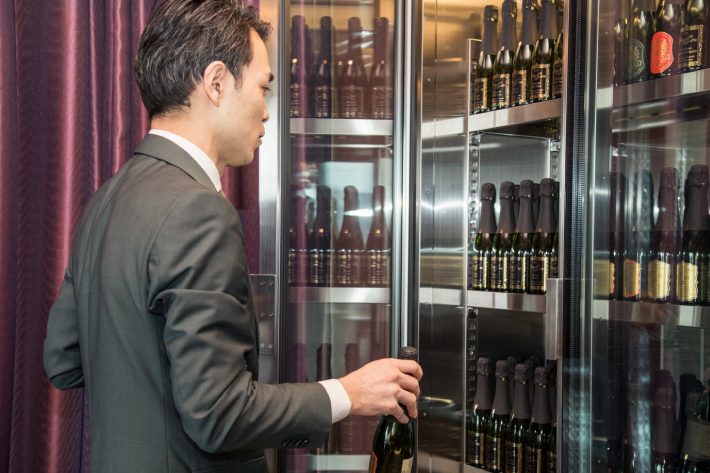
こちらのコーヒーの特徴は、世界中から厳選した究極のコーヒー豆が焙煎されたうえ、シャンパン用のボトルに一本づつ詰めれています。ゲストは、ワインバーの要領で好きなボトルを購入して淹れてもらうシステムです。

なぜ、コーヒー豆をシャンパン用のボトルに詰めるかといえば、豆から出る炭酸ガスを封じ込めるため。炭酸ガスには、コーヒー豆本来の香りやフレッシュさが含まれているからです。ゲストの目の前で栓を開けると、「ポン」という小気味いい音と共に、焙煎したての芳しい香りが広がります。それは、ここでしか楽しめない快感です。
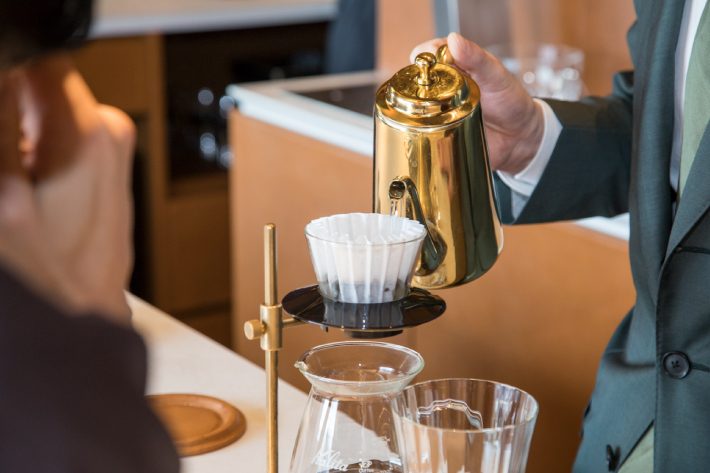
コーヒーは一杯ずつ客の目の前でドリップされます。この日は、プリンシパルコーヒーエバンジェリストの正木俊樹さんによるお点前。きっちり量を図り、87度のお湯でドリップします。これも官能の瞬間。
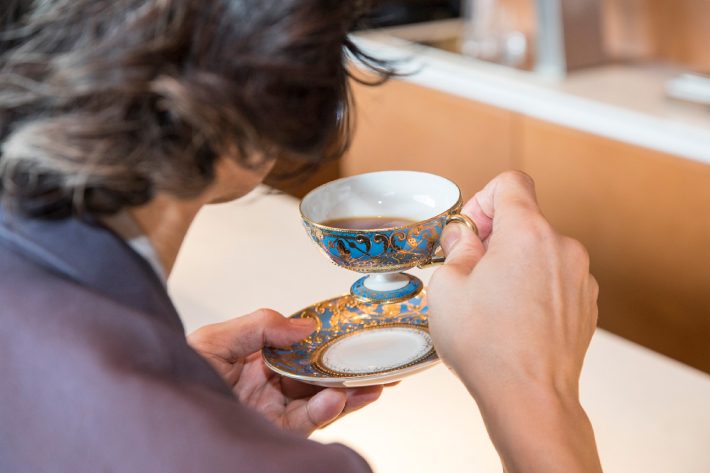
この日選んだ豆は、パナマのコトワ農園の「リオ クリスタル ゲイシャ バーガンディー ナチュラル」。川島さんは常に「コーヒーはフルーツ」と言いますが、このコーヒーも上質なブルゴーニュ・ワインのようなベリー系のフルーツ香が、口腔から鼻腔に心地よく抜けていきます。
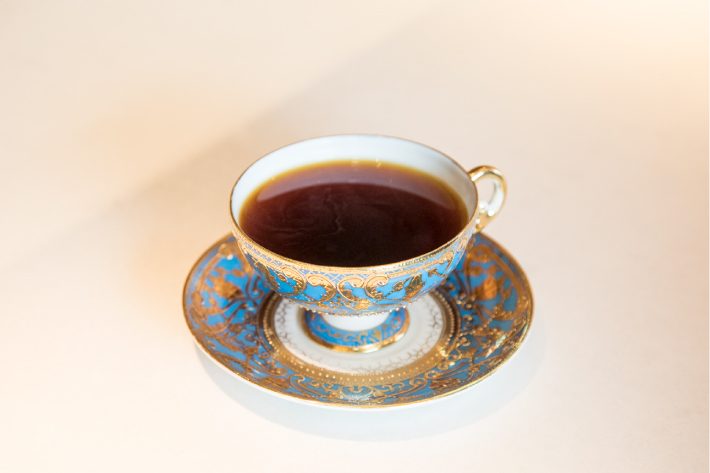
こちらのコーヒーカップは、ほとんどオールド・ノリタケの一品モノばかり。貴重な器で飲む体験もまた格別な体験です。
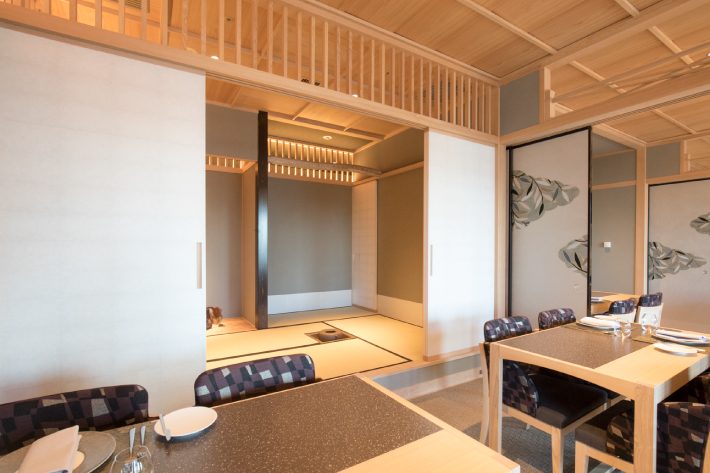
同じく13階にある「THE GRAND GINZA」は「銀座の大人にふさわしい、日本のトレンドや文化の発信地」をコンセプトに、約500坪のフロアにラウンジ、レストラン、パーティスペースから、多目的ホール、茶室、12席限定のシェフズカウンター、バーを備えた総合的なもてなしを目指しています。
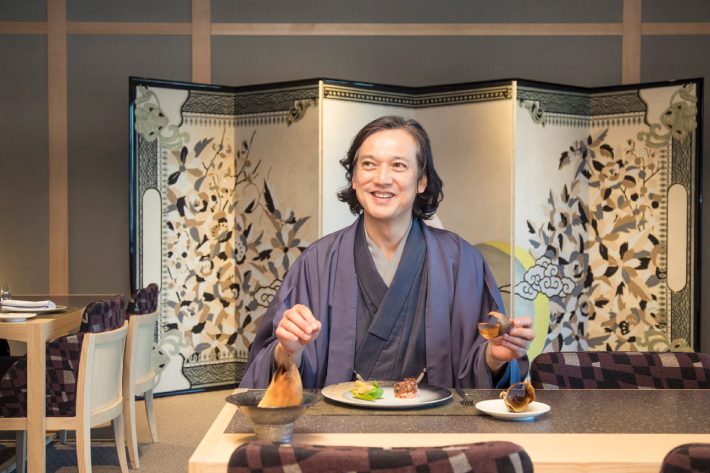
今回は、VIPルームでお食事をいただきました。銀座のど真ん中で、このような和の空間があるとは驚きです。ここは予約制ですが、別途の室料を払えば併設するレストラン「THE GRAND47」の料理も楽しめます。
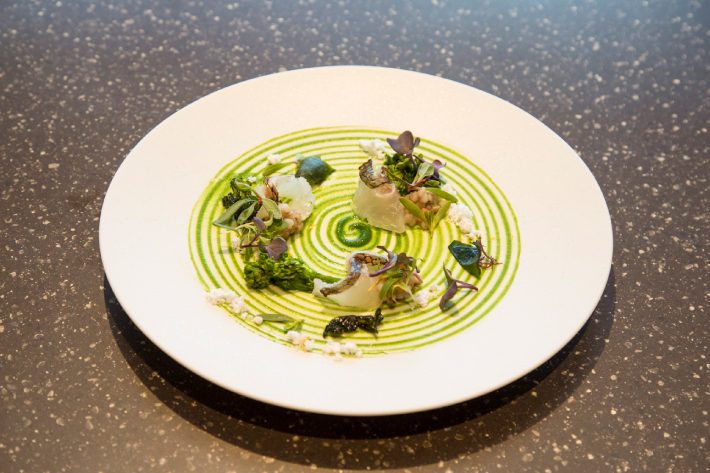
「THE GRAND47」のコンセプトは、47都道府県の素材と食文化を、期間ごとに楽しめるというもの(ランチコース:3,800円〜、ディナーコース:7,000円〜)。2018年2月15日から3月31日までのテーマは「四国」。
こちらの前菜は、鳴門海峡をイメージした盛り付けに、四国の鯛が昆布締めに。
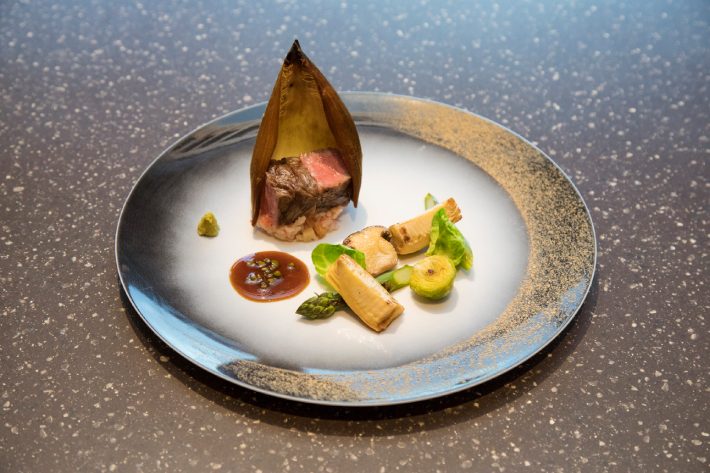
メインの料理は、届いたばかりの四国の旬の筍や、オリーブ牛が珠玉の一皿に。
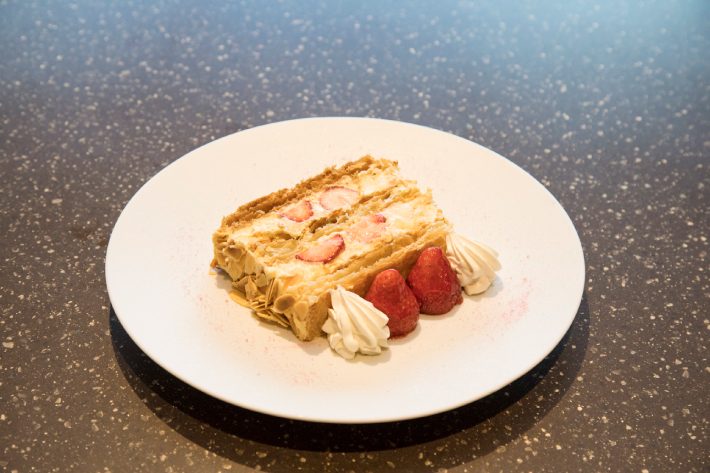
デザートはかつて銀座の味として親しまれて、2015年に閉店した「マキシム・ド・パリ」の名物だった「苺のミルフィーユ」のレシピを、当時の初代パティシエと元総支配人から受け継ぎ再現。こちらは、一日限定20個でテイクアウトも可能だといいます。
今回、茶人目線ということもあり、あえて着物でGINZA SIXの館内を巡りましたが、大人が一日中着物で巡るにふさわしい、アート・オブ・ライフの空間であることを知ることができた、貴重な体験となりました。
Text:Takanori Nakamura Photos:Kanako Noguchi Edit:Yuka Okada
Having made my way around GINZA SIX intensely at a leisurely pace, I’ve concluded there’s a foundational hospitality here comparable to the inner essence of chanoyu, the tea ceremony. The association with the tea ceremony might sound unforeseen, and to some, perhaps, the tea ceremony brings to mind a profusion of esoteric rules. It’s certainly true that the tea ceremony covers a wide range. From the planting and cultivation of garden trees to the look of the pathway and the arrangement of the stones; from the architectural details of the tea room building to the appearance of the tea room itself and its hanging scroll and flower arrangements both indispensable for perfecting an alcove; from the charcoal implements and incense to the traditional kaiseki dishes, confections, and different kimonos to suit the seasons—it encompasses an entire way of life. All of these aspects are intricately detailed and suffused with an artistic sensibility. That’s what makes the tea ceremony, of which Sen no Rikyu was a master, so interesting.
Viewed from a certain perspective, GINZA SIX also produces a profusion of all-encompassing lifestyles. One sees aesthetic and curatorial devices everywhere, which is what prompted the association with chanoyu. Tea master Sen no Rikyu was, in a sense, an event producer and an art director with a keen aesthetic sense. If he were alive today to take in all that GINZA SIX is, he might well be taken aback by the evidence around all of his ideas and ideals. I’m a bit of a tea practitioner myself, so I went around GINZA SIX imagining I was Sen no Rikyu, making selections with a tea master’s eye.

The appearance of Kurogi Chacha on the second belowground floor is exactly like a tea room. You follow a little path by a stone basin and enter. You find a five-person counter laid out like a small tea room. It feels like a mountain villa in the city, a carefully orchestrated, extraordinary experience.

The only item on the menu here is Kurogi’s famous Tai Chazuke (rice soup with sea bream) (3,000 yen; all prices given are before tax). Don’t make the mistake of dismissing this as mere rice soup. It’s not the traditional soup and three side dishes, but the meal does come with rice and miso soup, fresh sea bream sashimi with special sesame sauce, a side dish in a small bowl, a vinegared dish, and pickled vegetables. Certainly adequate as a traditional kaiseki meal.

After starting with some of the sea bream with just freshly steamed white rice, I then enjoy the fish and the rice in a different bowl as rice soup. There’s miso as well, putting before the diner the option of multiple flavors. For the tea, too, you can choose from green tea, roasted green tea, and other varieties.

The rice is all-you-can-eat. In fact, so is the sea bream with sesame sauce. Incidentally, the restaurant opens at 10:30 a.m., so I’d certainly recommend it for a late breakfast. There are few places in Tokyo where you can enjoy delicious Japanese fare for breakfast.

The confection for dessert is Tokiba Shironeri, which can also be purchased as a gift or souvenir. The upper half is arrowroot jelly with Uji matcha tea; the lower half is Hokkaido cream cheese.

The matcha is prepared together with the confection. The restaurant collaborates with Fukujuen, a long-time Kyoto tea purveyor founded in 1790, so you can enjoy truly authentic matcha tea.

Today’s cup was skillfully prepared by Daisuke Nakamura. As said at tea ceremonies, I praised him: “It was very delicious.”

Grand Cru Café Ginza on the 13th floor is a coffee specialty store produced by Yoshiaki Kawashima, founder of Micafeto and renowned “coffee hunter.” The store feels like an elegant French restaurant. But it’s actually what might be called an extreme coffee salon, the likes of which is to be found nowhere else. I met Mr. Kawashima when he appeared on the NHK BS1 program “El Mundo,” where I was once a regular, and this café is the embodiment of his belief that coffee can be enjoyed just like fine wine.
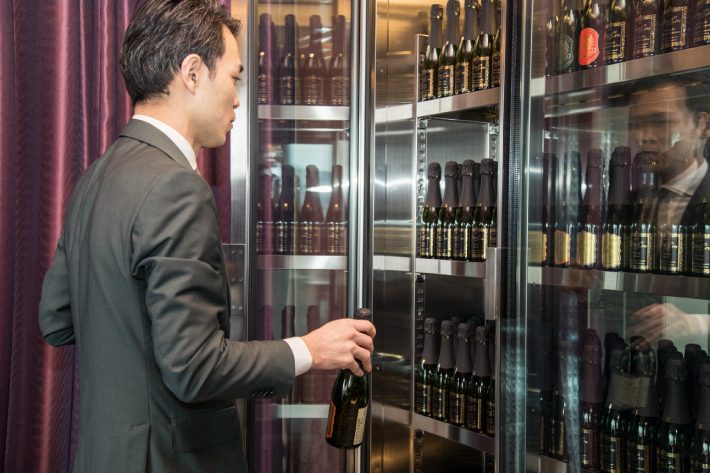
The very finest coffee beans rigorously selected from around the world are roasted, then bottled in one bottle at a time, like champagne. Guests purchase the bottle they prefer, as at a wine bar, and have the coffee brewed.

The coffee beans are placed in bottles (like champagne) to seal in the carbon dioxide given off by the beans. That’s because the carbon dioxide contains the distinctive coffee aroma and freshness. When the bottle is opened in front of the guest, there’s a pleasant popping sound, and the aromatic scent of freshly roasted coffee beans fills the air soon afterward. It’s a pleasure to be found only here.

The coffee is drip-brewed one cup at a time right in front of the guest. Today, my cup is skillfully prepared by principal coffee evangelist Toshiki Masaki. The amount is carefully measured out, and the coffee is drip-brewed with water heated to a precise 87 degrees. This, too, is a delight for the senses.

Today, I chose Kotowa Rio Cristal Geisha Burgundy Natural coffee beans from Panama. This coffee has a fruity, berry aroma that recalls a Grand Cru Burgundy wine, just as how Mr. Kawashima constantly refers to coffee as fruity. It strikes the palate in a very pleasing way.

Almost all the coffee cups are one-of-a-kind Old Noritake cups and saucers. The experience of tasting coffee from such a special and invaluable vessel makes the experience that much more distinctive.

THE GRAND GINZA, also on the 13th floor, is a 1,653-square-meter space that incorporates everything from a lounge to a restaurant, banquet area, multipurpose hall, tea room, 12-seat chef’s counter, and bar, all based on the concept of a gathering spot for adults interested in Japanese food culture and the goal of providing all-encompassing hospitality.

I dined today in the VIP room, a kind of Japanese-style space I was surprised to find in the middle of Ginza. It is reservations-only, but if you pay the separate room charge, you can also enjoy the cuisine from the adjoining THE GRAND47.

THE GRAND47 showcases ingredients and cultures from Japan’s 47 prefectures as part of a constantly changing series of menus. The theme for today is Shikoku. Arranged to resemble the Naruto Strait, this appetizer consists of kobujime sea bream from Shikoku.

The main dish is seasonal, fresh-from-the-garden Shikoku bamboo shoots and Olive Beef on a gem-like plate.

The dessert is a version of the strawberry mille feuille recipe made famous by Maxim’s de Paris, which shuttered in 2015. Once known as the taste of Ginza, the recipe affectionately reproduced here has been handed down from the original first-generation patissier and that establishment’s head chef. No more than 20 of these desserts are made daily. Takeout orders are accepted.
Due partly to my experiment in looking out at the world with the eyes of a tea ceremony practitioner, I felt perfectly free to wander about wearing a kimono. I learned a great deal about GINZA SIX as an “art of life” space ideal for a day for a kimono-clad adult. An experience to treasure.
Text:Takanori Nakamura Photos:Kanako Noguchi Edit:Yuka Okada
中村 孝則
コラムニスト。ファッションやグルメ、旅やライフスタイルなどをテーマに幅広く執筆や講演などを行う。現在「世界ベストレストラン50」日本評議委員長も務める。剣道教士七段、大日本茶道学会茶道教授。著書に「名店レシピの巡礼修業」(世界文化社)、共著に「ザ・シガーライフ」(ヒロミエンタープライズ)などがある。


